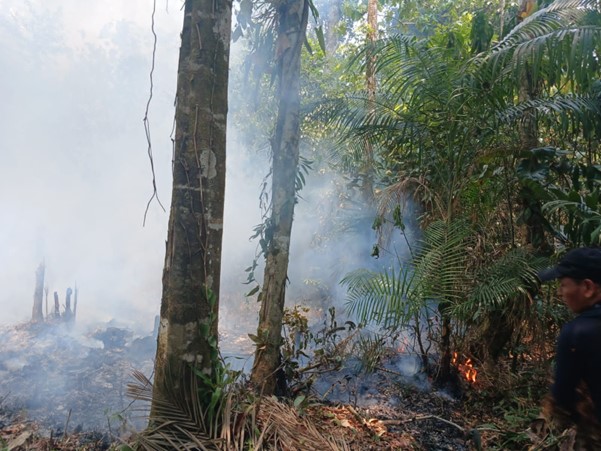The Restoration Initiative Year in Review 2022
Great results in ecosystem restoration can be achieved when different stakeholders, local communities and decision-makers join forces to deliver impact, as said by the recently released annual report of The Restoration Initiative (TRI) for 2022.
The Restoration Initiative unites three Global Environment Facility agencies – the International Union for Conservation of Nature (IUCN), the Food and Agriculture Organization of the United Nations (FAO) and the United Nations Environment Programme (UNEP) – to restore degraded landscapes in nine African and Asian countries in support of the Bonn Challenge. Since 2018, this program has been working towards the restoration of mangroves, arid lands and tropical forests in alignment with global goals for climate, biodiversity and desertification.
As COVID-19 pandemic restrictions were lifted, 2022 was a particularly successful year for the program.
Partners of TRI accelerated implementation, which is shown in the steep increase of hectares under restoration and improvement of land management practices, deployment of financial resources for forest and landscape restoration (FLR), improvement of national and subnational policy frameworks for FLR, and enhancement of capacities across stakeholders on FLR practices and technology, restoration assessments and nursery development, among other things.
Partners of TRI were able to share lessons learned and experiences as well as gain new capacities at the global learning workshop that took place in Nairobi, Kenya, in November 2022.
Progress at the country level
In 2022, 490 660 hectares of land were restored and 118 467 hectares improved, which unlocked USD 274 million for investments. These actions are having a direct impact on individual well-being by improving the quality of life of 287 239 direct beneficiaries.
Among the achievements highlighted in the publication is the progress in the Democratic Republic of the Congo, where the engagement with existing community structures (Dimitra Clubs, Farmer Field School, and Village Savings and Loan Associations) has allowed for reach to 3 680 households with capacity and technical packages to implement restoration. It has also facilitated the funding of 70 microprojects to improve household incomes through FLR activities.
Additionally, the successful creation of the Coordination Platform for Restoration in Guinea Bissau paved the way for collaborations between governments, non-profit organizations, businesses and local communities to foster the impactful restoration of coastal ecosystems and long-term mangrove restoration through the formulation of a law and a strategy.
“The Restoration Initiative once again demonstrates that building on the vast field experience of local and national stakeholders through knowledge sharing and collaboration between countries generates ecosystem-wide benefits that can be replicated to scale in other projects,” said Christophe Besacier, Senior Forestry Officer and Forest and Landscape Restoration Coordinator at FAO.
After five years of successful forest and landscape restoration interventions, TRI continues to encourage organizations and governments to double down on their actions to restore and preserve ecosystems for the benefit of people and nature.
We invite everyone to access "The Restoration Initiative: 2022 Year in Review" and join the global movement to restore our planet's natural balance. The publication is available for download at https://www.fao.org/documents/card/en/c/cc6085en.
For more information, please visit https://www.iucn.org/our-work/topic/ecosystem-restoration/restoration-initiative.
Contact: Adriana Vidal,
Global Manager,
The Restoration Initiative
Adriana.vidal@iucn.org
Please download the document from the links below:
English- The Restoration Initiative: 2022 Year in Review (fao.org)
French- L’Initiative pour la restauration: Revue annuelle 2022 (fao.org)



